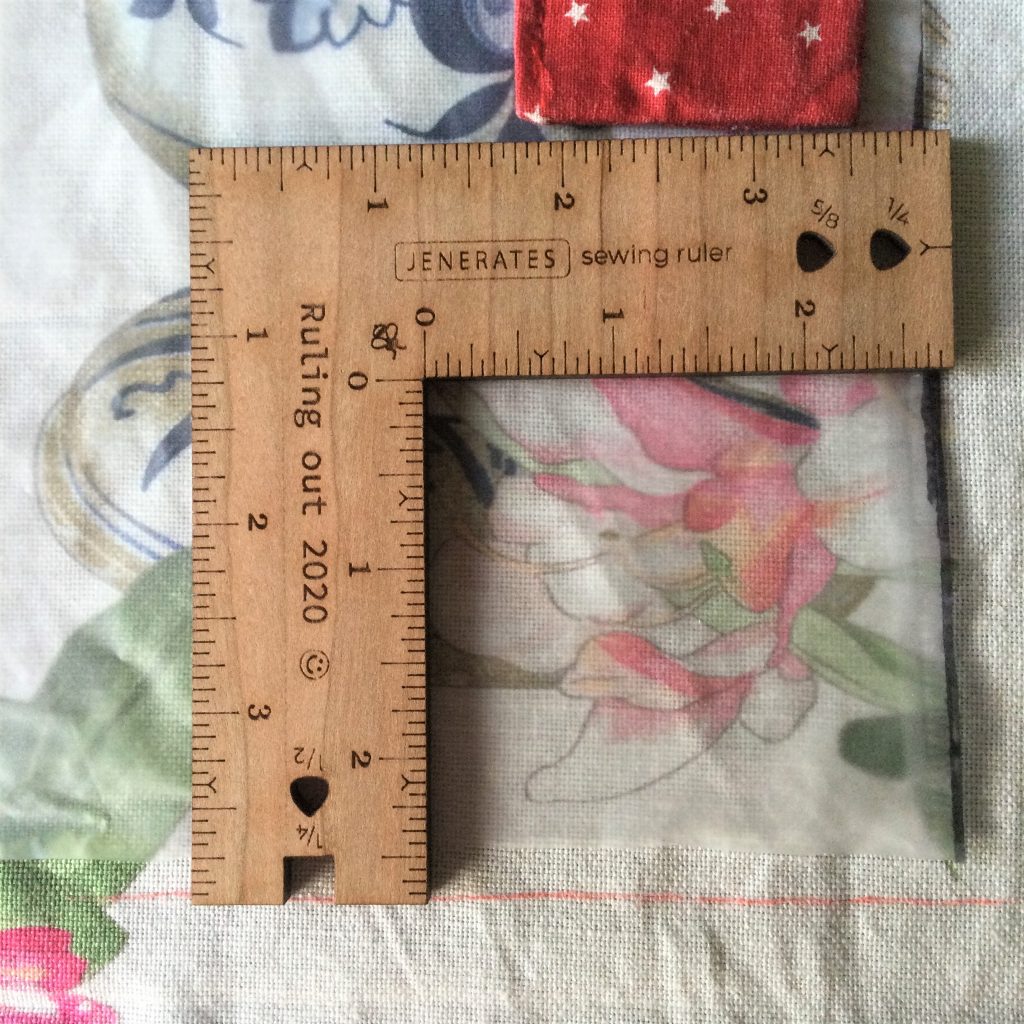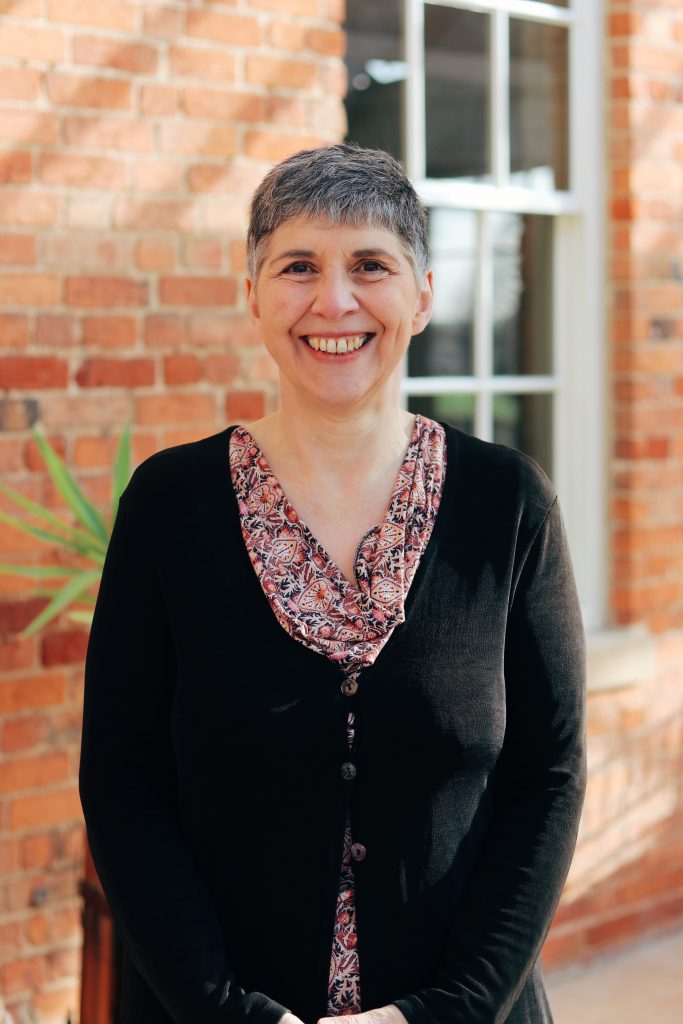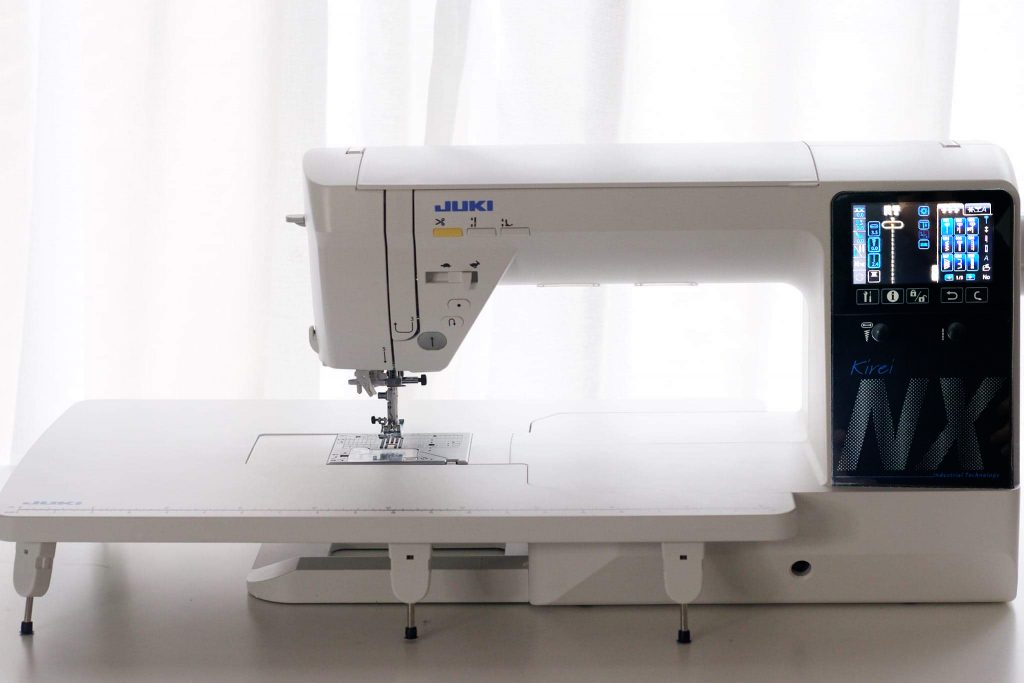Mercedes walks us through making a machine cover. Transformations are one of the big challenges for contestants on the Great British Sewing Bee. Mercedes, a favourite on GBSB Series 5, shares a bit of magic as she transforms a basic plastic cover for her Juki overlocker into something special.

When my new Juki overlocker was delivered, I found a plastic cover in the box. It worked well as a basic dust cover but I wasn’t overly keen on how it looked. It occurred to me that I could transform this plastic cover into a toile for making a pretty cover from my own fabric. Here’s how I went about making my own bespoke overlocker cover.

Before 
After
Pattern preparation
The plastic cover provided is a very simple 3-piece design. First I used a pen to highlight the seams. This helped me to see how the cover sat on the machine. Then, with the cover on the machine I just looked to see where adjustments needed to be made.

Marking the lines
Using pins, I adjusted the cover, trying to keep the seam lines even to make it easier to keep everything on grain when I cut out the fabric. Then I marked the new seam lines to make it easier to cut up to produce the pattern.
Cutting and Marking
Next I cut the plastic cover on my new seam lines and marked them as to which piece was which. This helped ensure that when I cut the fabric, I had the right side facing up.
Another benefit of using the original see-through plastic cover, is that I was able to fussy cut my fabric. My see-through toile helped me to centre the design of my large scale fabric print.

labeling the side pieces 
labeling the front and back
Adding the seam allowance
Don’t forget that you will not have any seam allowance on your plastic pattern pieces. The seam allowance needs to be added before you cut it out. I added my 1/4 inch 6mm seam allowance with my pal Jen’s Jenerate’s sewing ruler. It was an easy and quick way of adding the ¼ inch allowance.

Adding a seam allowance with the @jenerates sewing ruler
Adding the lining
An old sheet from my scrap bag came in handy for my lining. I used my cut out pattern pieces as templates for my lining fabric. I think a lining does two things. It gives substance to your main fabric as well as adding a second dust barrier for your machine.

Adding a lining
Getting a handle on it
I love having a handle on my covers so next thing to do was to make one. If you are lucky enough to have a coverstitch machine this is very simple to do.
Cut a rectangle of fabric with a length slightly longer, 7cm/3” ish, than the top of your cover and 2 ½ times the desired width. Fold wrong sides together along the length at 2/5th the width.
Fold the remaining 1/5th down over the raw edge which will leave just one raw edge showing down the centre of the handle.
Using a three thread cover stitch and the raw edge facing down, seam down the handle with the centre needle following the centre line. This will cover the raw edge with a line of stitching and give you a very sturdy handle.

Coverstitching top and bottom
Putting it all together
Sew your cover together with your lining laid on the wrong side of the main fabric, so you treat it as one piece of fabric. I prefer to sew everything together on my sewing machine first so I can get all the corners nice and sharp. Then I overlock the edges to tidy them up afterwards.
At this point, I decided that the sides of the cover would look better if I added some interfacing for support. I used my plastic pattern pieces, without seam allowances. I cut a piece of firm interfacing for each of the side panels to attach to my main fabric pieces. These were slipped in between the main fabric and lining and ironed to fix in place. One layer of interfacing was good but I decided to add another piece on each side. Then it was perfect. Finally, to finish off the cover, I added bias binding to the lower edge.
There you have it, making a machine cover in simple steps. First transforming the basic plastic cover into a toile pattern for some pretty fabric from my stash. Stitching a handle. Adding a lining and some interfacing and finally finishing off with some binding. My overlocker cover was transformed from basic to beautiful.
Mercedes and her machines
Mercedes lives just outside Brighton with her husband Graham and their two cats, Maggie and Erica. Although their two children have both flown the nest, Mercedes ensures that they still remember where she lives by using them as guinea pigs for new designs and fabrics she wants to try out. Having worked in IT for over 20 years and serving as a reservist for 13, Mercedes has a passion for all things technical and wants to know the ins and outs and whys of everything. Having finally conquered her fear of stretch fabrics 5 years ago, it is now her passion. Developing new techniques and encouraging others to use and love this fabric more has become her crusade.

Mercedes was a contestant on series 5 of the Great British Sewing Bee and can be found at @ohsewthatmercedes on Instagram and at www.ohsewthatmercedes.wordpress.com
A bit about the machines Mercedes used for this project.

Juki MO 654DE overlocker 
Juki CSM 1800

Juki NX7
The Juki NX7 is definitely the final machine I am ever going to need to buy. I have been using it for a few months now and am blown away by how it does what I want it to do with ease and to such a high standard. I know that there are so many functions I have to explore still and with the touch screen so easy to navigate, I am not phased at all. Instead of a slight dread when tackling the more tricky fabrics, I am confident that my NX7 and I will sail through and the whole experience will be a joy.

Mercedes and her Juki MO-654DE overlocker
My overlocker is in constant use as I enjoy making garments in stretch fabric. This means I make demands of my machine, not only with respect to the thickness of some seams I ask it to finish for me, but also to the quality I expect. The MO-654DE overlocker was recommended to me over all the Juki machines as it is a real workhorse, and they were right. It is not one of the air-threading models but I have not had any issues with threading at all, in fact I have re-threaded just one thread without issue which would have been impossible on my previous machine. Having a reliable overlocker helps me keep the quality of my work consistently high.
Matching covers

Matching machine covers by Mercedes
Mercedes also has the Juki MCS-1800, a coverstitch machine that she used to make the handles. A coverstitch machine is essentially a hemming machine. Coverstitch machines give an amazing professional finish to any project but especially knits. Mercedes just made a cover for her coverstitch machine. If you are lucky enough to have a Juki coverstitch machine, it also comes with a plastic cover that you can use to make a toile pattern for your own bespoke beautiful cover.

a cover for the coverstitch machine











